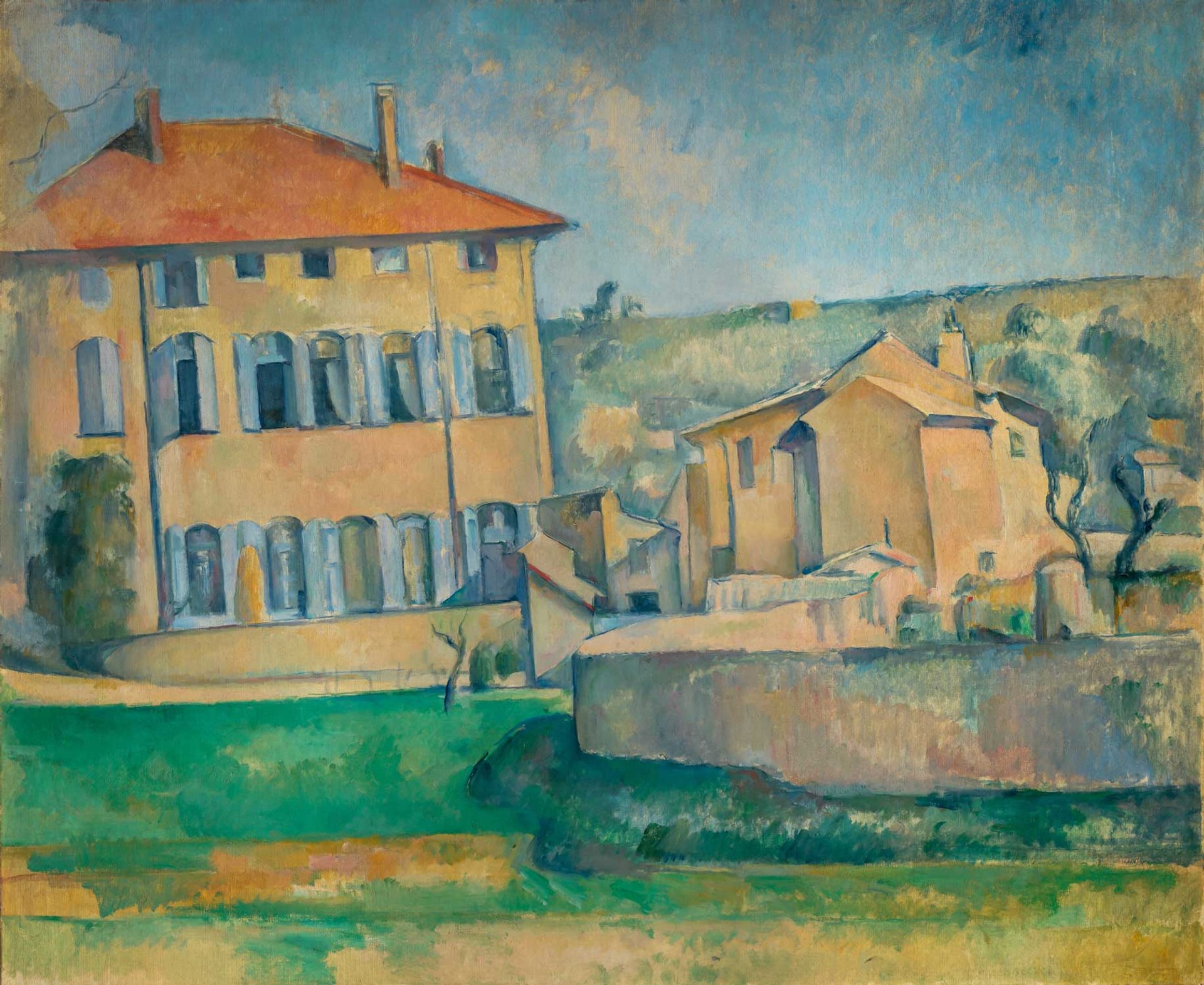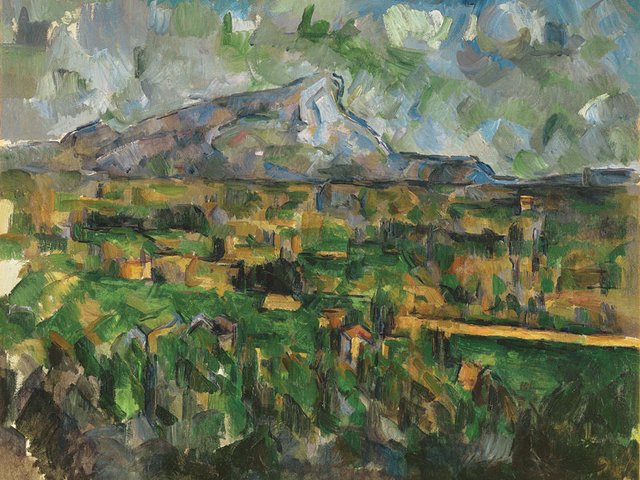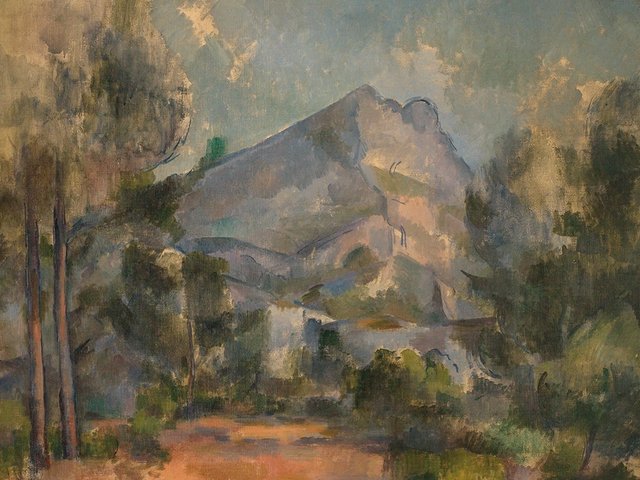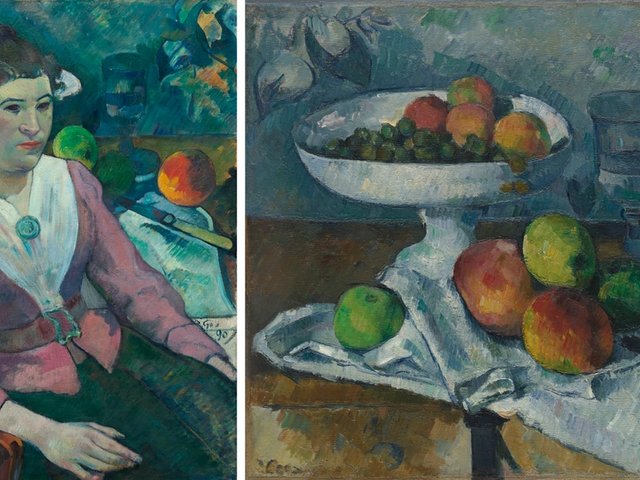Cezanne 2025, a programme of events and exhibitions to be held in the French painter’s home town of Aix-en-Provence promises to mark “the year the city reunites with its most famous resident”. The season starts with two major openings: Cezanne’s family home, the Bastide du Jas de Bouffan, now accessible to the public after extensive renovations; and a major exhibition at the Musée Granet, Cezanne au Jas de Bouffan (28 June to 12 October), that delves into the painter’s work during his 40 years there.
It seems absurd that a Cezanne exhibition in Aix-en-Provence is a big deal. The grey flat-cap mountain of Sainte-Victoire that he painted over 80 times is as unavoidable as the mistral in these parts. Aix is where he lived for most of his life. Its trees and stone are indivisible from his foundational experiments in colour and volume; its skies, no matter how inclement, are chiselled into his own. Cezanne lies buried on one side of the mountain, in the Saint-Pierre cemetery in town—and is the reason why Pablo Picasso is interred on the other. When Picasso purchased the Château de Vauvenargues, he famously told his Parisian dealer, Daniel-Henry Kahnweiler, that he’d bought “Cezanne’s Sainte-Victoire”—not a painting by the artist he called “my only master”, but a bit of the actual rock.
And yet, when Bruno Ely arrived at the Musée Granet in the 1980s as deputy director, Aix was, he says, “the town without Cezanne”. Now the museum’s director, Ely is shepherding the Cezanne 2025programme together with Denis Coutagne, the Musée Granet’s former director and current president of the Société Paul Cezanne.
The museum could have owned 100 works that Cezanne offered to bequeath it before his death in 1906. The director at the time, Henri Pontier, refused the gift in a fit of pique that turned out to have a long, spiked tail. Aix would have to wait until the 1980s and a long-term loan from the Musée d’Orsay to have any Cezanne paintings.
Now even supposedly “mediocre” Cezannes sell for tens of millions of dollars and the best for hundreds of millions. Ely says it is unlikely that the French state, let alone Aix, will ever be able to afford to buy another Cezanne.
Mural discovery
Cezanne was a 20-year-old law student when his father, Louis-Auguste, bought a house and a farm on what was then the outskirts of Aix and is now an unremarkable residential neighbourhood. He and his sisters sold the house to the Granel-Corsy family after their mother’s death in 1899, in whose possession it stayed for close to a century. The Granel-Corsy family sold the bastide to the city in 1994 but retained the right of its use until the last family member died in the early 2000s.
Restoring the house, though slow and costly, has yielded some exciting moments. In 2023, fragments of a mural were discovered in the Grand Salon. Subsequently titled Entrée du port (entrance to the port) (1864), it is the unexpected tenth addition to an ensemble of works that Cezanne painted directly onto the plaster. Most were transposed onto canvases when the Granel family moved in, then sold to museums around the world. Le jeu de cache-cache (hide and seek) (1862-64), a panel two metres wide that Cezanne painted over the lower part of Entrée du port, was removed and is now owned by the Nakata Museum in Japan. What was left of the first panel was simply plastered over and forgotten about.

Cezanne's House and Farm at Jas de Bouffan (1885-87)
© National Gallery, Prague
The centrepiece of the Musée Granet exhibition will be a reconstruction of that Grand Salon. Ely and Coutagne have secured loans of 70% of the original works. Among the panels reunited for the first time will be the Nakata Museum work, The Four Seasons (1860-61), on loan from the Petit Palais, Paris. Another will be The Painter’s Father, Louis-Auguste Cezanne (around 1865)—the National Gallery in London agreed to lend this masterpiece despite its current ban on loans in the context of its 200th anniversary celebrations.
The show opens with a focus on Cezanne’s training at the erstwhile Aix art school — of which the Musée Granet was originally a kind of functional annexe. For a long time, the only Cezanne the museum owned was from this era, an academic study of a male nude, first discovered in 1925.
Family and friends are a second thematic highlight. Loans include The Artist’s Father, Reading “L’Événement” (1866) from the National Gallery of Art in Washington, and another early work, Portrait of Émile Zola (1862)—the first painting by Cezanne that the Musée Granet was able to purchase, in 2011.
Sainte-Victoire
Expanded exhibition spaces on the first floor will make way for a selection of landscapes across Cezanne’s oeuvre. A particular highlight for Ely is House and Farm at Jas de Bouffan (1885-87), which he and Coutagne have attempted in vain to borrow from the National Gallery of Prague on multiple prior occasions. Several Sainte-Victoires will be on view, including the 1888 La Montagne Sainte-Victoire, which sold at auction in 2022 for $137.8m and is on loan from a private collector.
Four decades on, those Aix inhabitants who experienced it still talk about the three days and nights in August 1989 when Montagne Sainte-Victoire burned. Over 2,000 emergency responders raced to fight the flames. Local residents either evacuated their villages on the mountain or took refuge in their pools. Close to 6,000 hectares of forest were lost.
Ely remembers the night-time flames outlining the whole mountain as Dantesque. Mostly, he says, seeing Cezanne’s motif burning provoked a “profound trauma” that reached far beyond the Provençal hinterland. Within nine months, he and Coutagne (then director of the museum) were able to mount the consequential Sainte-Victoire Cezanne exhibition comprising around 70 loans – a logistical coup by any curatorial measure. It opened almost exactly 35 years ago, on 15 June 1990. Ely describes that willingness to contribute as an “acknowledgement that Aix was Cezanne’s centre of gravity”. With Cezanne 2025, the city is once again laying claim to his heart.
- Cezanne au Jas de Bouffan, Musée Granet, Aix-en-Provence, 28 June-12 October






